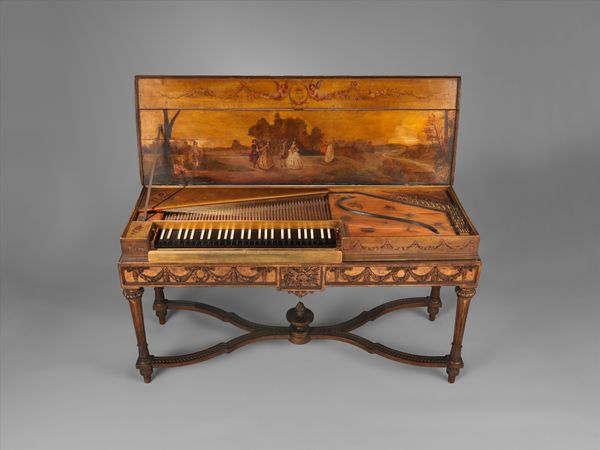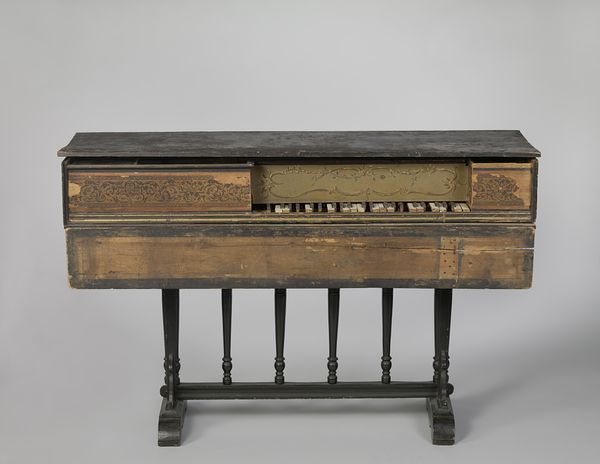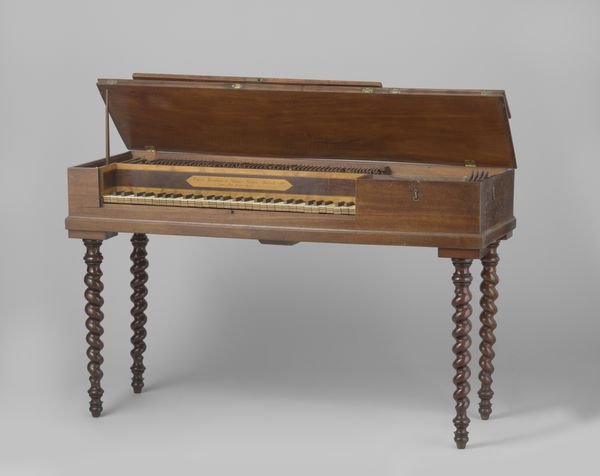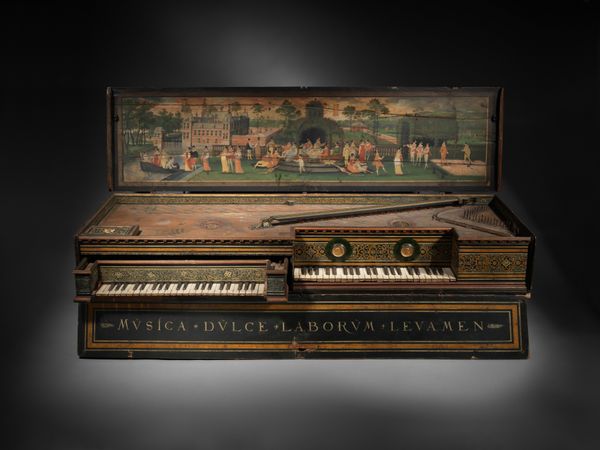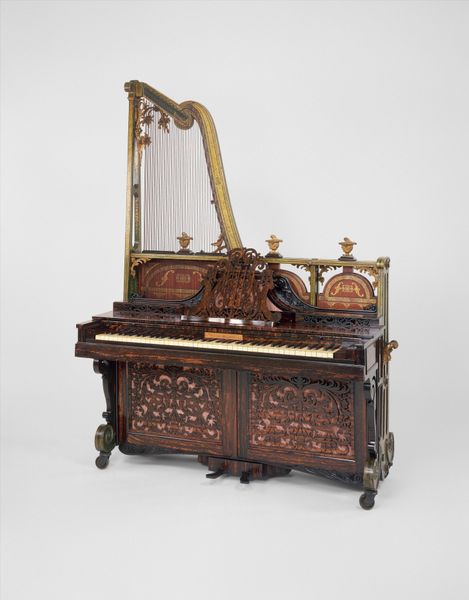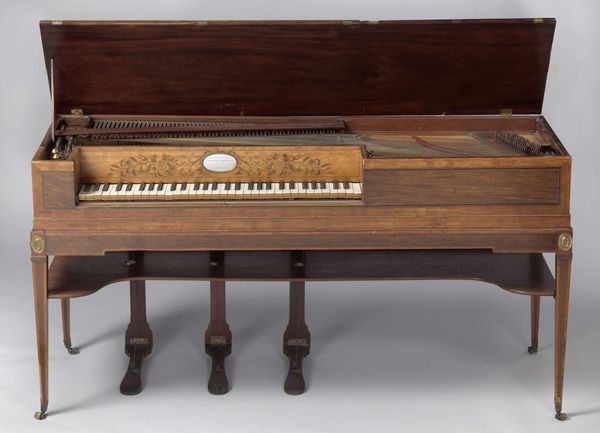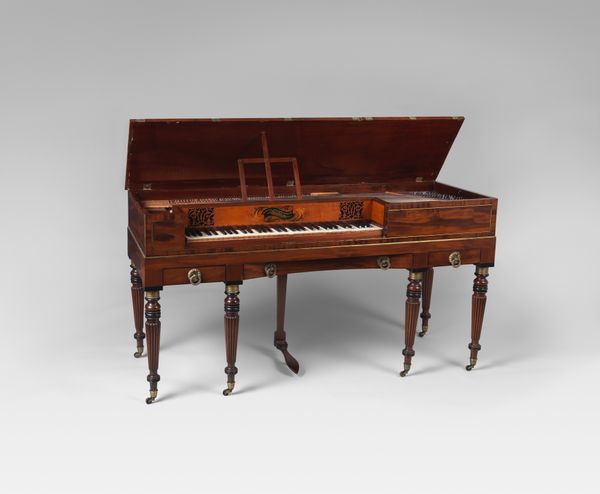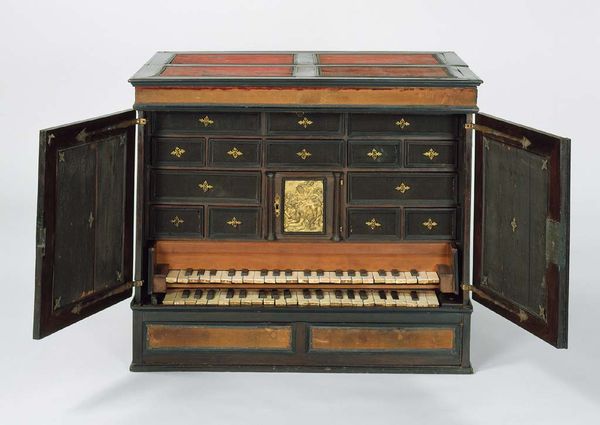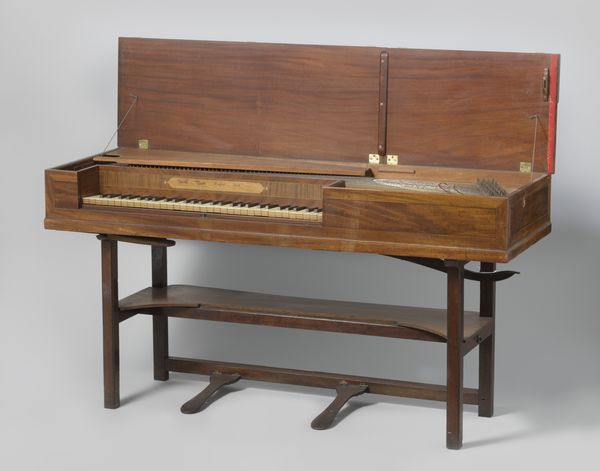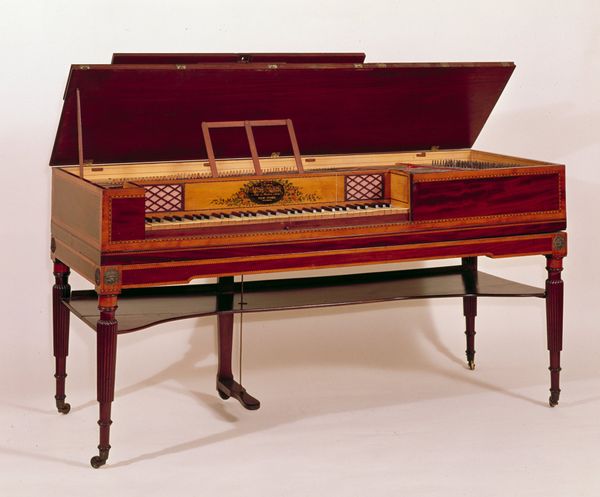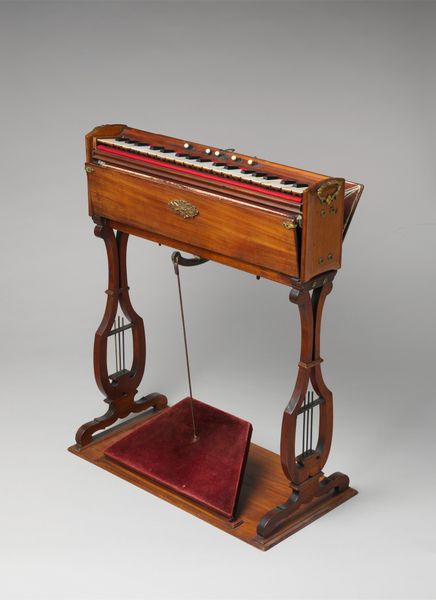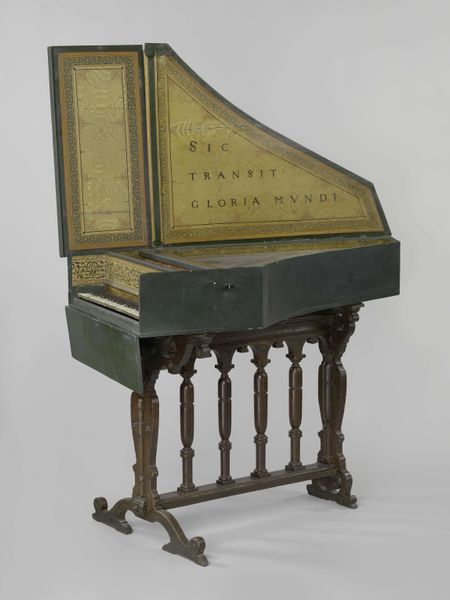
wood
baroque
sculpture
wood
musical-instrument
decorative-art
Dimensions: Height: 9 7/16 in. (24 cm) Width (parallel to keyboard): 67 1/4 in. (170.8 cm) Depth (perpendicular to keyboard): 19 3/16 in. (48.8 cm) Measurements for that stand: H. 28 in. W. 58 in. D. 24 in.
Copyright: Public Domain
Curator: What strikes me immediately is the lavish use of decoration. There's an undeniable sense of status and artistry communicated here. Editor: Precisely. What you’re observing is the “Muselar Virginal,” crafted in 1622 by Joannes Ruckers. Currently residing at the Metropolitan Museum of Art, it serves as a testament to Baroque aesthetics in musical instrument making. Notice the ornate embellishments adorning the wooden surface? Curator: The dark wood inlaid with lighter designs creates such a stunning contrast, and it speaks to a high level of craftsmanship, someone who worked intimately with the material itself to manipulate its appearance. You know, instruments were status symbols at the time but they were also communal objects that created shared cultural experiences through music making, and the level of craftsmanship is astonishing. Editor: And beyond individual artistry, Ruckers' workshop significantly shaped the landscape of musical instrument production and distribution during that era. His instruments became the gold standard and their quality cemented social expectations. Their influence also extended beyond just the aesthetic realm, they created opportunities for burgeoning musical scenes to evolve in new social strata and performance settings. Curator: So the accessibility of instruments played a significant role in the type of compositions we're more likely to see become popular through this era. Does this piece speak to the patronage systems of the era? How does a piece like this factor into our understanding of artistic creation during this period? Editor: Absolutely. Ownership of an instrument like this often signified cultural capital and connection to elite circles, yet its accessibility, through public performances or private lessons, could trickle down and broaden musical knowledge amongst middle class audiences and other members of courtly societies. It reminds us of art’s duality – a display of power but also an agent of potential democratization. Curator: Thinking about the level of work that went into this versus how music is made now really helps frame an important shift in artistic consumption and distribution. Editor: It's remarkable how a single object can illuminate broader historical shifts isn't it? A visual anchor to a vibrant, yet distant, past.
Comments
No comments
Be the first to comment and join the conversation on the ultimate creative platform.
